The distinguishing element to Michelle Stephens’ practice has not been to pursue a skill in a traditional manner, but to unravel and question it to develop new skills. She uses these skills, histories and traditions of textiles in strategic ways to challenge conventions and generate new practical and theoretical perspectives.
Furthermore, a specific interest in line and how it can be distorted and formed has led to a number of varied outcomes. Stephens explores how meaning is constructed and understood from line and how it can be transformed by contemporary sensibilities into a new visual language.
As a result internal oppositions exist within the work; geometric and organic, construction and deconstruction, order and chaos. The introduction of technology alongside hand crafted techniques has always been of great interest to her. Laser cutting and digital technologies are combined with personal abstracted weave techniques throughout her work.
This enables Michelle Stephens to establish her own unique voice through the way in which she assembles the individual fragments. These arrangements of forms, colour combinations, outlines of structure, and the degree of complexity or openness are all choices that she makes during the making process.
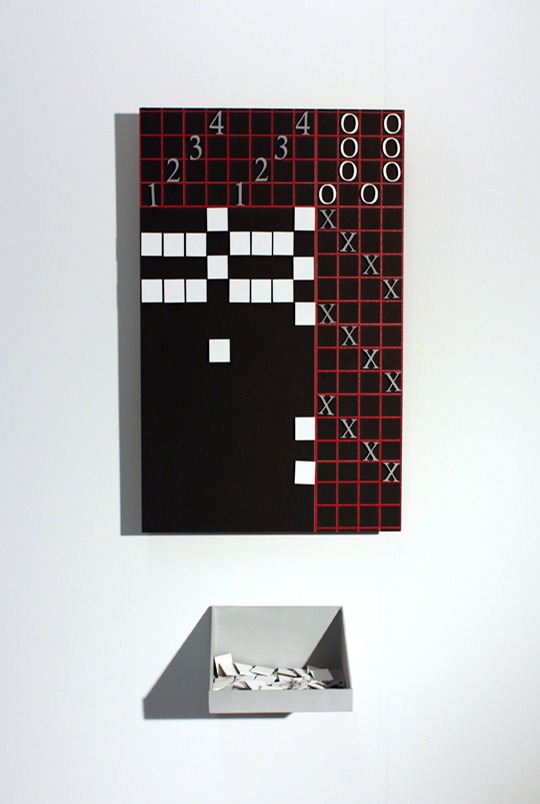
Geometric and organic
Michelle graduated from the University of Ulster Belfast with First Class Honours from her B.A. (Hons) in Fine and Applied Arts degree, in June 2010. Following a placement year in the US, she returned to complete her degree in Belfast, only then to stay on another year as Artist in Residence within the Textile Art Department. Most recently Michelle has now taken up a place on the Making IT program with Craft NI.
Stephens is now a part-time lecturer in the University of Ulster, Belfast. Complementing her practice with art workshops and demonstrations in art institutions enables Stephens to share her processes and experiences with the public, students and other practitioners. As well as this she also facilitates workshops in a variety of environments including hospitals, heritage sites, art centres as well as primary, secondary and tertiary education.
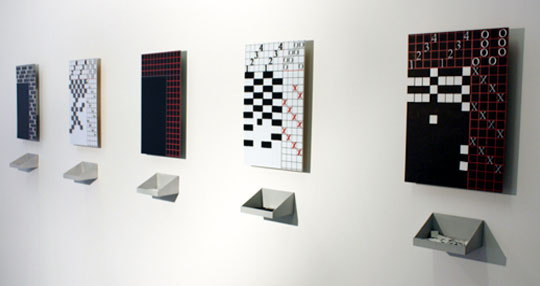
Industrial roots
TextileArtist.org: What initially captured your imagination about textile art?
Michelle Stephens: Textile art encompasses a number of different areas that I’m particularly interested in. With regards to specific textile processes, weaving crossed those boundaries that intrigued me as an artist. Peter Dormer writes that;
“There is a conceptual core to woven textiles based on the physical structure of weaving that holds the elements of craft, art, design and manufacturing together in a unity…” [1]
These were the areas that captured my imagination, and continue to do so in contemporary practice.
What or who were your early influences and how has your life/upbringing influenced your work?
Having grown up in Northern Ireland I have been heavily influenced by the linen industry and our rich history of textile manufacturing. My father also used to draw patterns out for jacquard looms as well as creating the actual jacquard punch cards for a local mill back in the 1950’s. So there has always been a textile root in my family.
Although many working mills are now shut down, our heritage centres and museums trace this history in great detail. Our archives map our countries industrial roots and illustrate how manufacturing heavily influenced the economics of Northern Ireland.
What was your route to becoming an artist?
Following my A-Levels I decided to start a Foundation Course in Art and Design at the University of Ulster, Belfast. On completion of this I then went on to do my BA (Hons) Fine and Applied Arts, specialising in Textile Art at the same University. During this degree I completed a Diploma in Area Studies (DAS) in an American College, named the College of Saint Elizabeth. This involved studying business and art during a full year at this University.
Following this placement year in the US, I returned to complete my degree in Belfast, only then to stay on another year as Artist in Residence within the Textile Art Department. Most recently I have just finished on the Making IT program with Craft NI at R-Space, Lisburn (Year One) and the University of Ulster, Belfast (Year Two). So I have had three year long artist residences since graduating in 2010, which have been instrumental in the development of my practice.
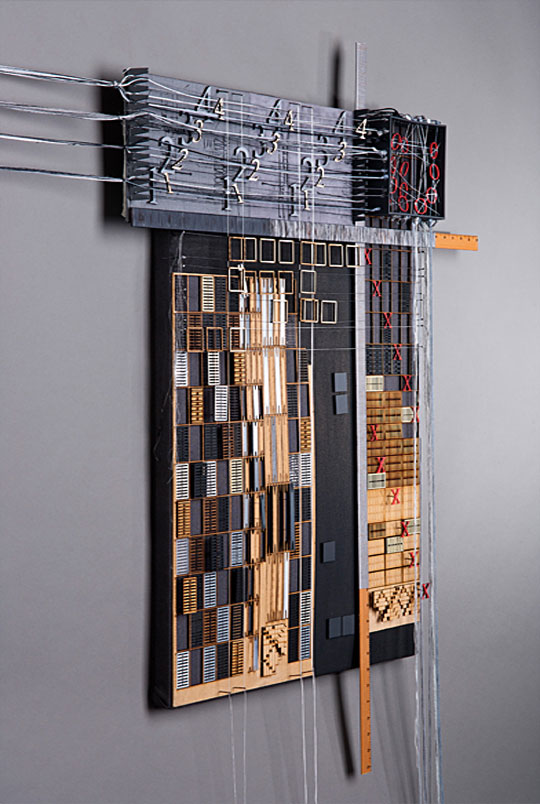
The rhythmic nature of cloth
What is your chosen medium and what are your techniques?
The core of my practice involves the fusion of craft and technology. I embrace new technology and incorporate it into the making process. The interface between the material and digital is what I’m specifically interested in. I utilise computer laser cutting, forged steel and digital technologies alongside abstracted woven techniques in my work.
I’ve explored and developed abstracted weave techniques, inventing many new and imaginative ways of integrating textiles with other media. I work away from the loom, using the techniques and principals of weaving to create works that explore the illusionary space between two and three dimensions. The works are dramatic, rhythmic and holographic in feel.
Materials include wood, metal, perspex, paint, threads and woven fabrics. These enable me to explore the rhythmic nature of cloth and the way that it is made.
How would you describe your work and where do you think it fits within the sphere of contemporary art?
In essence, my work combines quality craftsmanship and aesthetics with a highly conceptual approach, often belying the perceptions and blurring the margins that are set up between Fine and Applied Art. I incorporate a diverse range of materials in the work, from textiles to metal, wood and plastic. Through each of these mediums I aim to let the materials express what I want to communicate. The visual language of my work which finds its origins in textile processes and materials is also the language of modernity, and ‘is used in a strategic way to counter-balance subjectivity and offer an array of meanings.’ [2]
Tell us a bit about your process and what environment you like to work in?
I need to have an organised studio environment to make sense of all the components within my work. As I have so many elements to bring together in any given piece, I need to index and organise in order to understand the work that I’m producing.
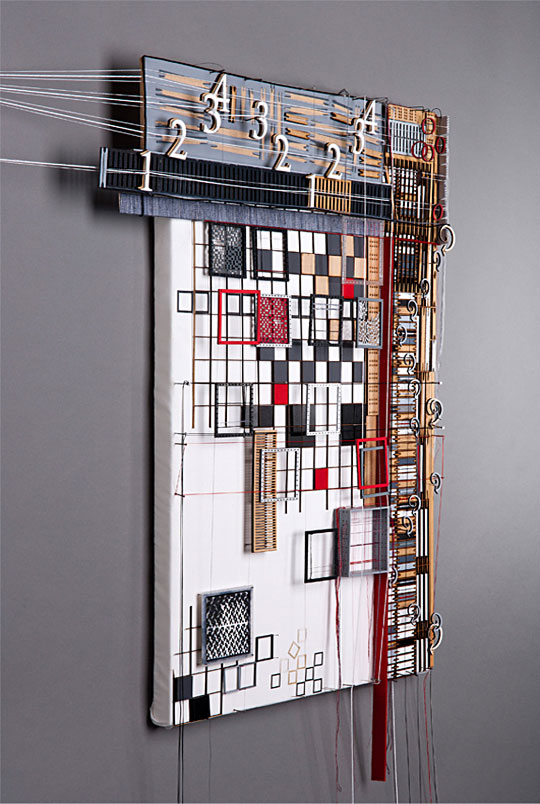
The digital and the material
Do you use a sketchbook?
Yes a sketchbook is a vital component in my design process. I have a digital sketchbook of computer trials – on various software, as well as a physical paper based sketchbook. I couldn’t make without this crucial documention! It enables me to thrash out ideas very quickly and easily. It also clears the mind of any baggage so that space is left for future work.
What currently inspires you and which other artists do you admire and why?
I admire my peers in ‘The 62 Group of Textile Artists’ as well as fellow makers. It’s not an easy life to lead, so it’s inspirational to see other practitioners’ in my field making life long careers in it.
How has your work developed since you began and how do you see it evolving in the future?
I hope to continue to fuse the old with the new, working at the interface between the digital and the material. This is where I believe innovation lies. I don’t want to loose my roots as a textile artist, so I hope to pull that language and dialogue through in future developments.
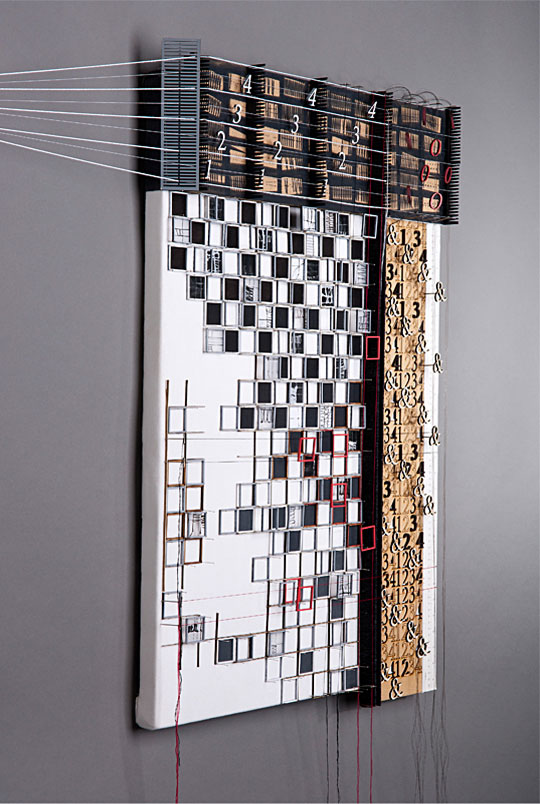
Recommended resources
Can you recommend 3 or 4 books for textile artists?
I’d definitely recommend the following books for any textile/craft enthusiast:
Thinking Through Craft . Adamson, G. (2007)
The Invention of Craft . Adamson, G. (2013)
Digital Visions For Fashion and Textiles: Made in Code . Braddock Clarke, S. E. and Harris, J. (2012)
The Handweaver’s Pattern Directory . Dixon, A. (2007)
Weaving: Methods, Patterns & Traditions of An Ancient Art . Martin, C. (2007)
Abstracting Craft: The Practiced Digital Hand . McCullough, M. (1996)
Cloth and Culture Now . Millar, L (edited) (2007)
Textile Futures: Fashion Design and Technology . Quinn, B. (2010)
World Textiles: A Concise History . Schoeser, M. (2003)
Learning Processing: A Beginner’s Guide to Programming Images, Animation and Interaction . Shiffman, D. (2008)
Digital Crafts: Industrial Technologies for Applied Artists and Designer Makers . Shillito, A. M. (2013)
What other resources do you use? Blogs, websites, magazines etc.
I pull information and gain more knowledge from other practitioners’ blogs, websites, textile journals, craft journals and various books. I also do regular exhibition and site visits as and when required.
What piece of equipment or tool could you not live without?
I probably couldn’t live without my drawing equipment. It’s the first stage in my making process… without it I just would miss a crucial step in the design element of my compositions.
Do you give talks or run workshops or classes? If so where can readers find information about these?
Yes, I give talks and run workshops in various environments. I generally post everything up on my website, twitter or facebook page. So feel free to have a look on any of these platforms for more information. Even shoot me an email if you have a specific group or workshop in mind. I will be happy to facilitate if requested.
Website: michellestephens.co.uk
Twitter: MStephensArtist
Facebook: Michelle Stephens Artist
Email: mail[at]michellestephens.co.uk
How do you go about choosing where to show your work?
I have to be very selective in showcasing my work. As the materials and textile dialogue I work with are considered to be from an applied art background then my main focus is to have it alongside similar work. Therefore it needs to be positioned within specific craft galleries and other applied art galleries.
Other art galleries and exhibition spaces will always be considered, and if found to be suitable I will put my work in there. More so this is to get a different perspective by having a new audience viewing my work. I also showcase my work when possible in specific ‘62 Group’ exhibitions nationally and internationally. The most recent ones have been in Japan and London.
[1] P. Dormer. 2007. Thinking Through Craft. Oxford: Berg Publishing. P171
[2] M. Bristow. 2006-2007. http://www.clothandculturenow.com/Maxine_Bristow.html, Date accessed 01/09/2009
For more information please visit: michellestephens.co.uk
If you’ve enjoyed this interview with Michelle Stephens then why not let us know by leaving a comment below.
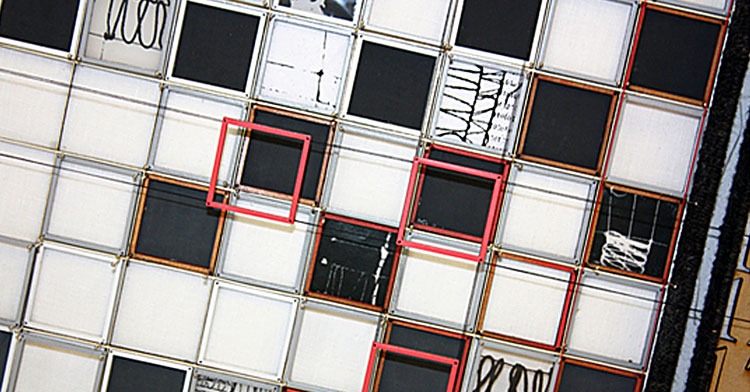
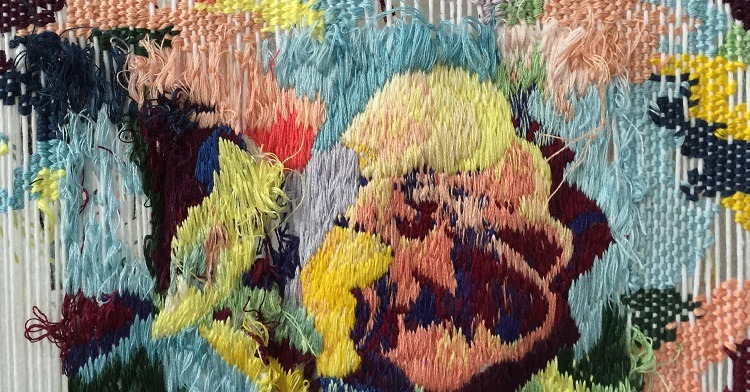
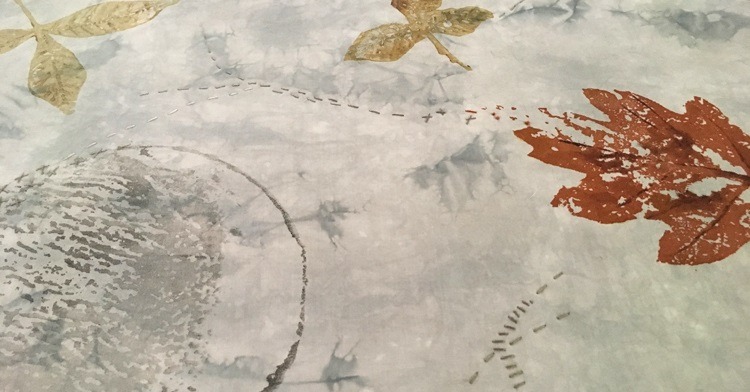
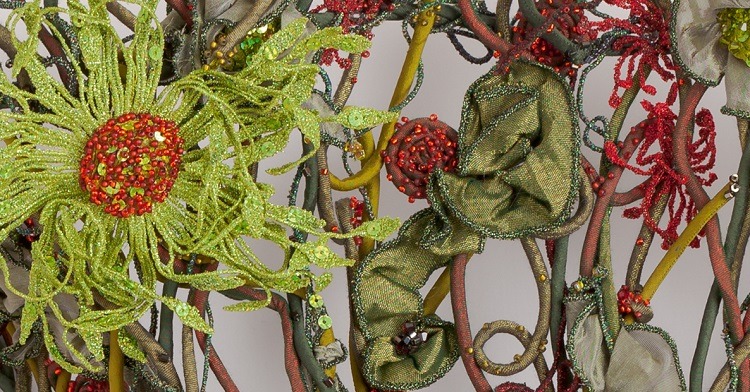
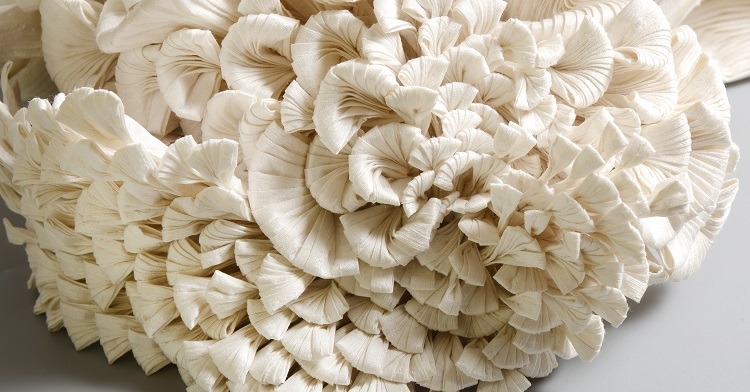
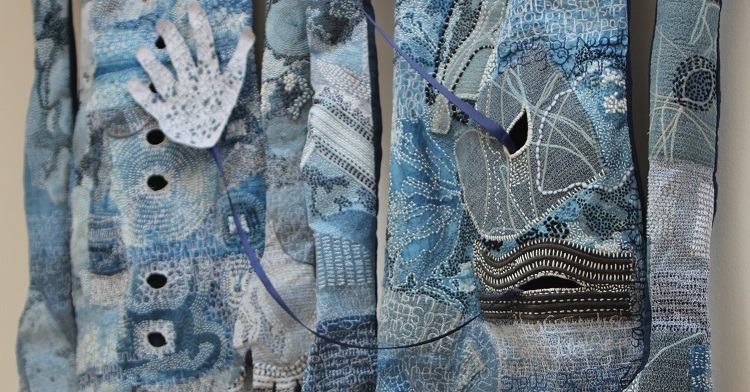
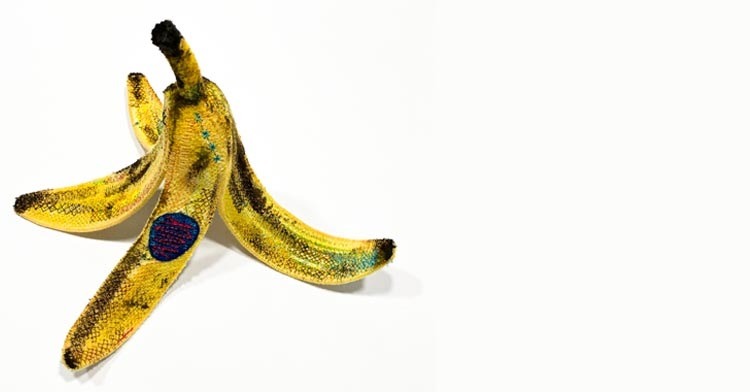
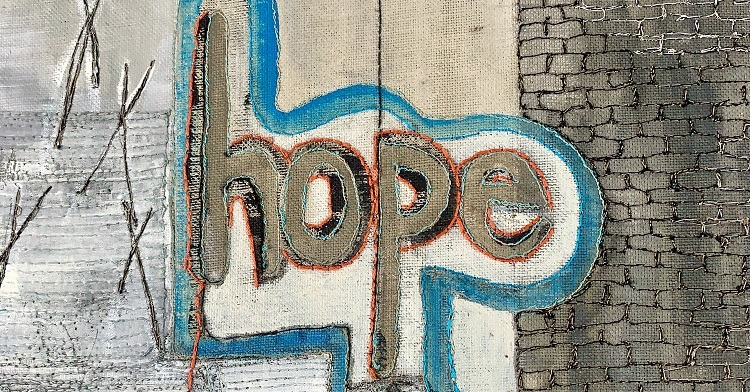
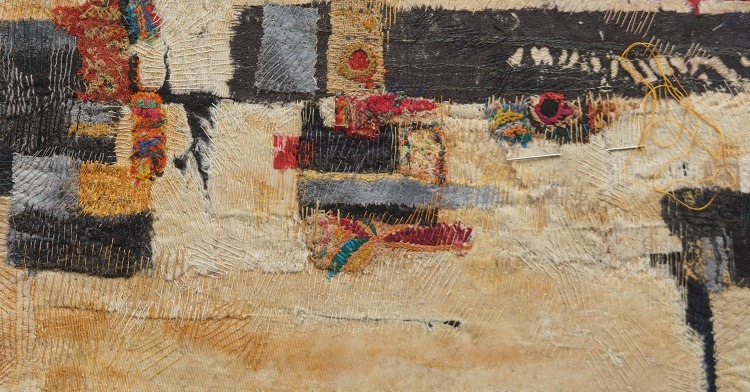
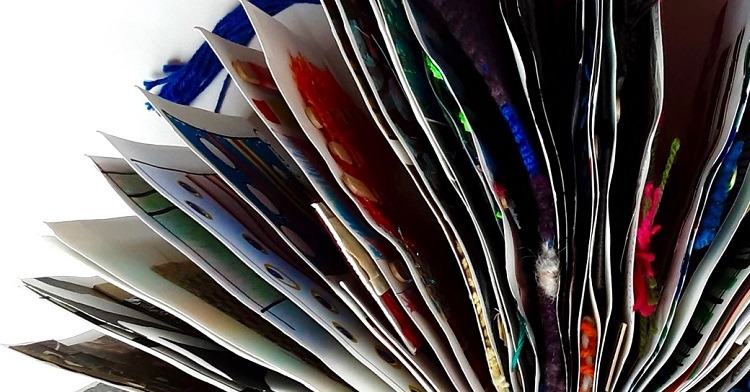
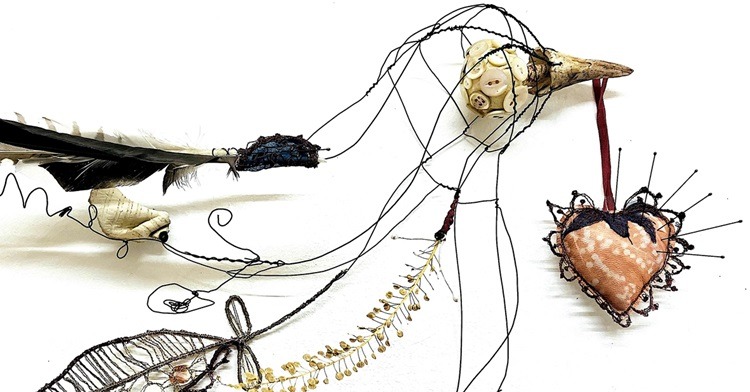
Comments